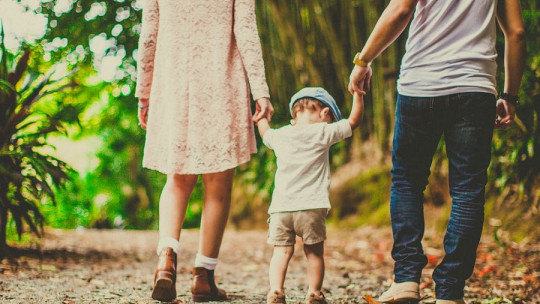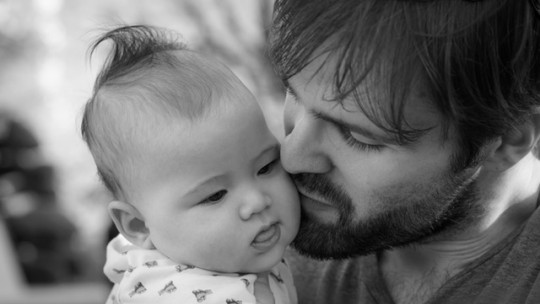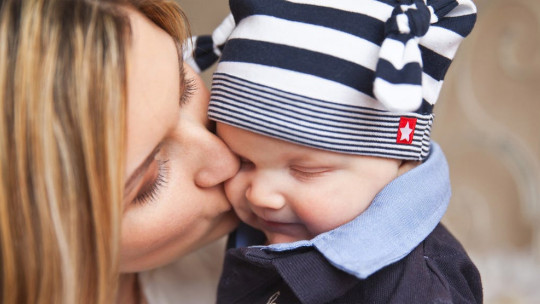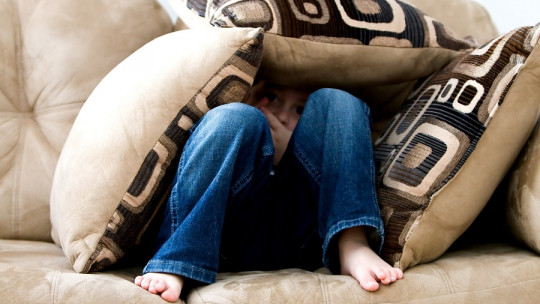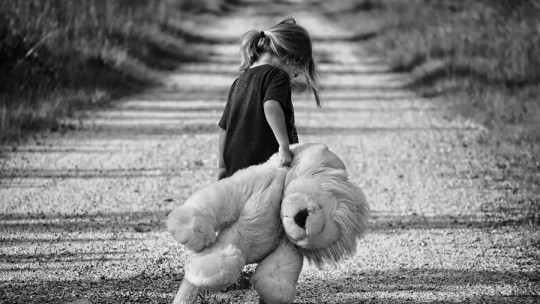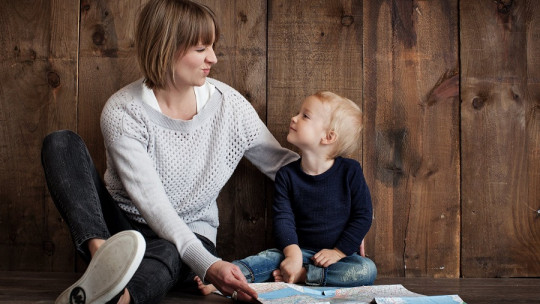
People often wonder to what extent the experiences we had in childhood, especially those we were able to share with our parents or other relevant figures, could condition our way of being and relating in adult life.
The human being comes into the world immersed in the most absolute vulnerability, since it takes several months to achieve a minimum of autonomy. This is why we depend on others to survive, forging a necessary bond of attachment with our close environment.
These attachment figures will not only guarantee the resources necessary to survive, but also those essential to live, since they will become the first source of love and understanding on which the child will place his expectations and desires.
This is why attachment contributes decisively to building the basic foundations of the private sense of security, in a critical age period for emotional and social maturation. Knowing it, then, is important to understand who we are and why.
Attachment: what is it?
Attachment is a concept widely studied in scientific literature, especially based on John Bowlby’s theories on the construction of our first relationships during childhood.
As a term, it refers to the particular way in which people tend to interact with those with whom they establish a relevant bond, including the feelings of intimacy and commitment on which the subtle ties of a human relationship are based.
Attachment would be the staff on which the social melody would develop, and would sink its roots in the dawn of the first relationships. In the brief period that includes the childhood of any human being, the feeling of availability of parents (or other people who could be comparable in emotional terms) in the face of eventual harm or threat, would positively shape the vision of a changing environment in their same nature, to make it predictable and comfortable to be explored without fear inhibiting curiosity.
Attachment theories maintain that the particular characteristics of the nervous system in this evolutionary period would lead to neuroplastic changes on which the adult brain would subsequently be built, despite the fact that it is impossible to chisel memories that can be deliberately evoked (since the hippocampus matures after almost five years of life). Fear in this evolutionary period would turn vulnerability into helplessness, henceforth extending to all corners of the subjective experience of the years to come.
With the purpose of evaluating the way in which children interact with their attachment figures, which is the measure from which information can be extracted with which to determine the integrity of these links and their emotional consequences, Psychology has the procedure of the “strange situation”. Through this technique, the child is exposed to a structured sequence of encounters and disagreements with her main caregiver and an unknown subject, evaluating her reactions to the approach and distancing of both.
Through the application of this strategy, four different attachment styles have been determined, which describe particular modes of feeling and behavior that arise during interaction. All of them play an essential role in understanding the way we tend to establish bonds, not only in childhood, but also during the rest of the life cycle. Next we will stop to outline a brief description of each of them and its possible personal or social implications.
1. Secure attachment
Securely attached children perceive their parents (or analogues) as trustworthy figures, which they can resort to in the event that their investigations into the environment accidentally involve a potentially dangerous situation. Children who have this specific style tend to seek out their caregivers when they experience a difficult emotion, thus achieving relief from it. When parents disappear they feel uncomfortable only at first, regaining contact naturally when they return.
Adults with this attachment style experience a feeling of general satisfaction in their relationships with others, being able to establish a relational framework that facilitates the healthy development of all those involved. Honesty and trust stand out as the fabric with which the seams of friendship or a relationship are embroidered, being able to establish a deep emotional bond with those they consider worthy of it. It is the most common form of attachment, and acts as a protective factor against psychopathology.
2. Worried or anxious attachment
Children who have this style of bonding with their parents do not have the security of having the help they may need in case of need This uncertainty causes interest in the environment to be conditioned by fear, in such a way that exploration is limited by a latent but constant insecurity. This feeling is exacerbated in those cases in which parents resort to the threat of abandonment as a mechanism to control disruptive behaviors.
Adults with this attachment style tend to avoid their emotions because they consider that they could be overwhelmed by their intensity, which makes it difficult to acquire essential resources for the regulation of internal experiences. Everyday life is often experienced from an ambivalence between approach and rejection, since both generate such a degree of discomfort that the person wanders in the back and forth of the gray spaces that border between one and the other. The fear of abandonment, and the feeling of inadequacy, can be recurrent.
3. Fearful or avoidant attachment
The child with this attachment pattern perceives that any attempt to seek the comfort that his or her caregiver can provide will end in a situation of open ridicule or contempt, which will also be followed by the total absence of protection and security along with a harmful feeling. of learned helplessness. This circumstance contributes to the child trying to adopt a position of self-sufficiency, in an attempt to build scenarios in which to feel safe without the contribution of others.
In adulthood, This attachment style is characterized by the deliberate search for solitude and discomfort in personal relationships Independence becomes of capital importance, creating a fear of death at the expectation of commitment to other people in the areas of friendship or as a couple. The search for solitary jobs and a lack of interest in forging new relationships can also be common.
4. Disorganized attachment
Children who develop this specific style have experienced multiple situations with their explicitly threatening attachment figures, since they adopt a negligent or even abusive attitude (in the broad sense of the term). Because the infant cannot assume physical or emotional emancipation, he would necessarily remain close to the pernicious influence of his caregivers, appearing anxious both in his presence and in his absence (chaotic and disorganized).
This attachment style generates deep marks on the personality and self-image, and is therefore the one that has the closest relationship with the psychopathology of adults and children. Next, a brief review will be carried out on the available evidence regarding the consequences on mental health attributable to insecure attachment modalities (preoccupied, fearful and disorganized).
Attachment and mental health problems in adulthood
There are various studies that aim to explore the possible relationship established between attachment in childhood and the development of psychological disorders during adult life. Still, the multiplicity of influences that converge to shape an individual makes it difficult to precisely isolate the role of these early interactions on health, despite extensive data suggesting such a connection.
There is scientific evidence that insecure attachments are related to a higher prevalence of mood and anxiety disorders, as well as the clinical expression of obsessive-compulsive symptoms. The presence of jealousy within romantic relationships is also more common among those who have an insecure attachment pattern, and often has its roots in an intimate feeling of insecurity and fear of abandonment.
Other authors consider that anxious attachment could be the seed of a later personality structure disorder, both in cluster B (histrionic or borderline) and cluster C (dependent), while avoidant attachment would be related to the disorder of homonymous (avoidant) personality. In any case, difficulties in regulating emotional experience emerge as the common factor underlying this extensive psychopathology.
The impact of attachment style on mental health is a topic of current interest in the field of scientific psychology, since it could be an explanatory element of tremendous value to understand the distal risk factors of many mental disorders that limit the quality of life. of life of the population. It is an area in continuous expansion, of which we have only begun to unravel the surface.
It is also important to consider that many studies point in the direction that attachment does not have to be established as a rigid and immutable reality, but can undergo transformations during the development of life as a consequence of personal work and the establishment of relationships that provide spaces for emotional repair.
A child’s mind holds the potential to build a happy life Despite the vulnerability that accompanies us at the moment of birth, the first years are essential to define who we will be and what paths we will follow in the hectic journey of existence. The first social relationships are, in this sense, the key to channeling development towards biological, social and emotional plenitude.

